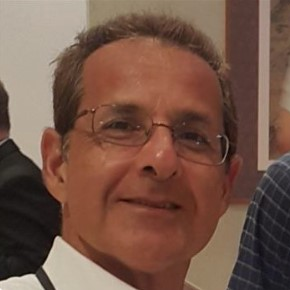Gels for Bioprinting
A special issue of Gels (ISSN 2310-2861).
Deadline for manuscript submissions: closed (31 August 2021) | Viewed by 24486
Special Issue Editor
Interests: bioinspired gels; gels for stem cell delivery; self-assembled micelles for growth factor immobilization; models gels to control cell microenvironment; composite materials with structure at multiple length scales; skeletal tissue engineering
Special Issues, Collections and Topics in MDPI journals
Special Issue Information
Dear Colleagues,
Bioprinting is an emerging technology for the generation of complex tissue-like structures and organ printing with gradients in microstructure, growth factor, and matrix composition. Printed structures are used for the regeneration of injured tissues, drug screening, and toxicological studies. The bio-ink plays a critical role in the viability of printed cells, retention of bioactivity of growth factors, printing resolution, fusion of droplets, and structural stability of the printed construct. Graded constructs with respect to stiffness, growth factor composition, or porosity can be created using a combination of inks with different properties. Due to their biocompatibility and tunable properties, water soluble oligomers, macromers, and gel precursors have attracted a great amount of interest as bio-inks in nozzle- as well as laser-based printers. This Special Issue highlights hydrogels and their properties used as inks in tissue and organ bioprinting. Relevant topics include theoretical and experimental investigation of fluid dynamics and rheological properties, gelation kinetics, droplet stability and fusion kinetics, mechanical properties, cell lineage determination, phenotypic variations and maturation during droplet gelation and fusion, collective behavior of encapsulated cells in printed constructs, and tissue formation. Other topics of interest include enzymatically degradable inks, bioactive inks, electroactive and conductive inks, inks for patterning, and inks for the fabrication of nanoscale biodevices.
Prof. Dr. Esmaiel Jabbari
Guest Editor
Manuscript Submission Information
Manuscripts should be submitted online at www.mdpi.com by registering and logging in to this website. Once you are registered, click here to go to the submission form. Manuscripts can be submitted until the deadline. All submissions that pass pre-check are peer-reviewed. Accepted papers will be published continuously in the journal (as soon as accepted) and will be listed together on the special issue website. Research articles, review articles as well as short communications are invited. For planned papers, a title and short abstract (about 100 words) can be sent to the Editorial Office for announcement on this website.
Submitted manuscripts should not have been published previously, nor be under consideration for publication elsewhere (except conference proceedings papers). All manuscripts are thoroughly refereed through a single-blind peer-review process. A guide for authors and other relevant information for submission of manuscripts is available on the Instructions for Authors page. Gels is an international peer-reviewed open access monthly journal published by MDPI.
Please visit the Instructions for Authors page before submitting a manuscript. The Article Processing Charge (APC) for publication in this open access journal is 2600 CHF (Swiss Francs). Submitted papers should be well formatted and use good English. Authors may use MDPI's English editing service prior to publication or during author revisions.






